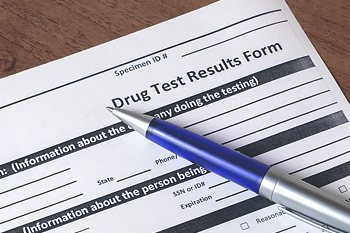Employment expert discusses drug testing and how employers can monitor substance use among WFH employees
 A recent survey revealed that positive drug tests among American employees reached a record high in 2019. But drug testing employees in 2020 will be much different due to the COVID-19 pandemic. How can employers monitor substance abuse among workers when millions of employees are working-from-home?
A recent survey revealed that positive drug tests among American employees reached a record high in 2019. But drug testing employees in 2020 will be much different due to the COVID-19 pandemic. How can employers monitor substance abuse among workers when millions of employees are working-from-home?
“We know that alcohol use has skyrocketed during the pandemic, and presumably drug use has as well, although those statistics are harder to track,’ says Rob Wilson, President of Employco USA and an employment trends expert. “Understandably, many employers are concerned about substance use among their workers, especially if it is occurring on the clock. Since so many people are working from home, it can be really hard to know if an employee is abusing drugs or alcohol during work hours, yet by the same token, drug-testing can also feel risky during a time when people are afraid to go to the doctor or health clinic or expose themselves to unnecessary germs.”
So how can employers safely continue drug testing their employees while still respecting the very real dangers of the pandemic?
“Mail-in drug tests are a good option for employers who want to monitor employees without requiring the employee to attend an in-person clinic,” says Wilson. “This may be a good option particularly for employees who are high-risk and very concerned about being exposed to the virus.”
For in-person testing, Wilson suggests having a healthcare professional perform the test on-site at your company location.
“Stagger testing times so that employees are able to practice social distancing and aren’t lining up close to one another,” says Wilson. “Have cleaning staff on hand to keep the bathroom sanitized between uses and help employees feel safe.”
Wilson also advises employers to be vigilant about staying in touch with their WFH employees and ensuring that daily timesheets and duties are monitored in order to keep workers on track.
“Daily conference calls or video calls can help to create a feeling of connection as well as help employees to feel seen and valued by their managers,” says Wilson. “Clear expectations and regular, scheduled contact throughout the week will help employees stay on track and create a sense of normalcy and routine that can be very valuable for mental health and for a company’s bottom line.”
Last, Wilson encourages employers to invest in mental health resources for employees and to normalize self-care as part of company culture.
“We know that 1 in 10 Americans struggle with addiction. It’s a disease that often requires outside assistance and treatment in order for the person to find healing and recovery. Drug testing is just one way that employees can monitor substance abuse, but even better is to add complementary practices like offering therapy or addiction recovery information to employees, as well as incentivizing exercise and other physical health measures.”
For more on this topic, please contact Rob Wilson at rwilson@thewilsoncompanies.com.